
Bolshoy Pond - a man-made pond in the center of Catherine Park, in the former Tsarskoye Selo (now the city of Pushkin in St. Petersburg).
This is the most picturesque and largest of the reservoirs of the city of Pushkin, its size is about 16 hectares.
The pond was dug in the early 18th century. By the middle of the 18th century, the pond took the shape of a hexagon and was surrounded by alleys. Later, the Large Pond underwent redevelopment and was turned into a lake, then the outlines of the pond were softened, pavilions, buildings and piers were erected around it, which gave the pond even more importance and picturesqueness. You could go boating on the pond.
Today, the Big Pond is the compositional center of the landscape part of the Catherine Park. Park pavilions and alleys with places for recreation still stand around the pond. Here, on the green meadows, in the summer, guests of the Catherine Park relax.
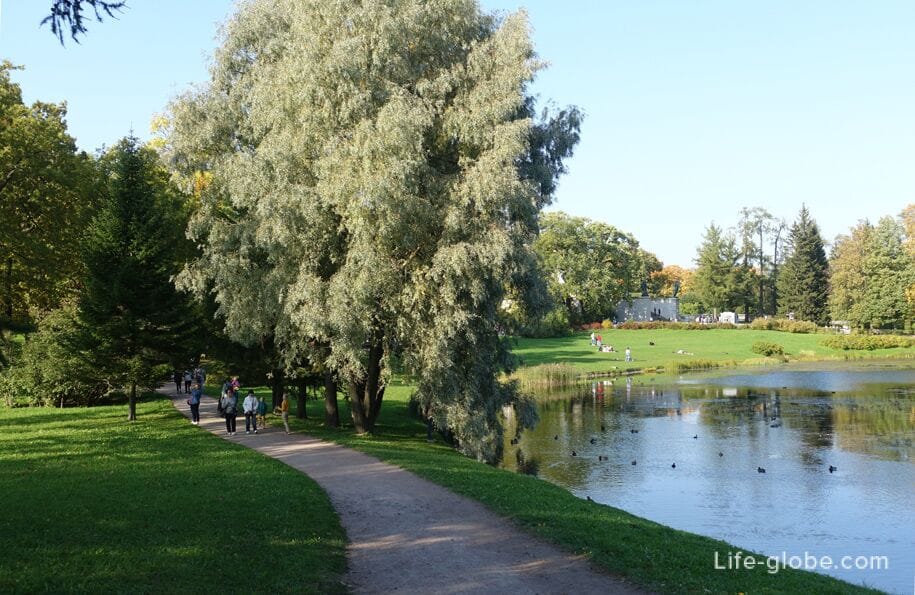
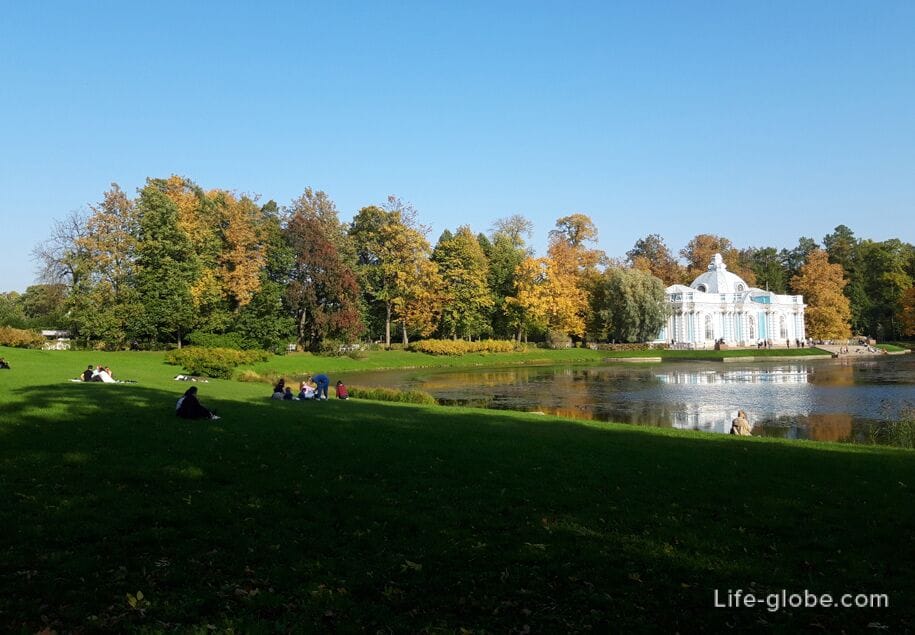
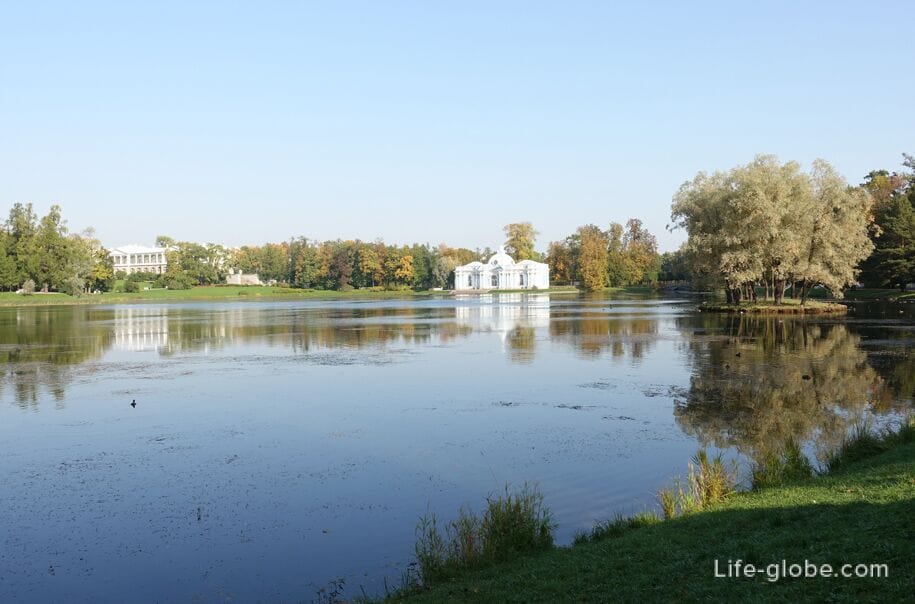
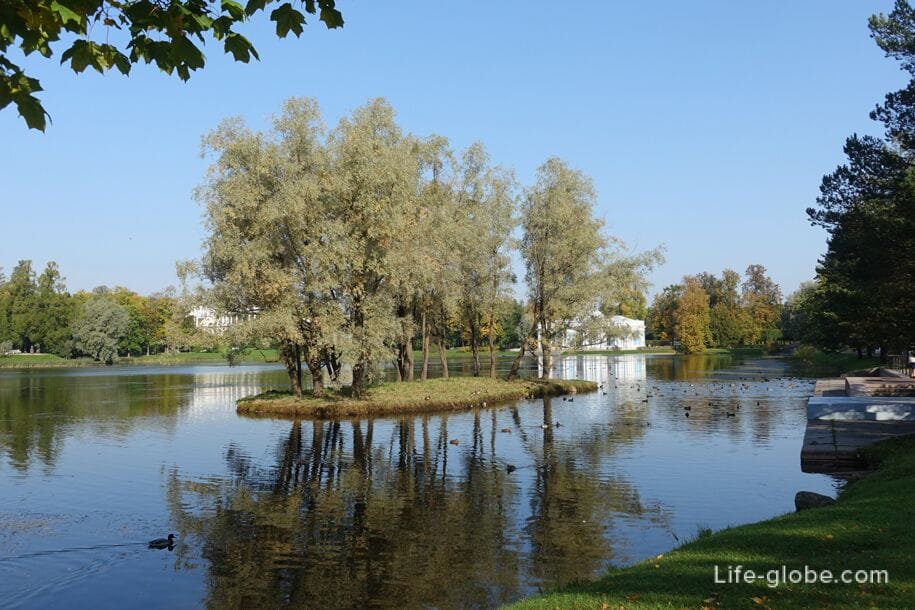
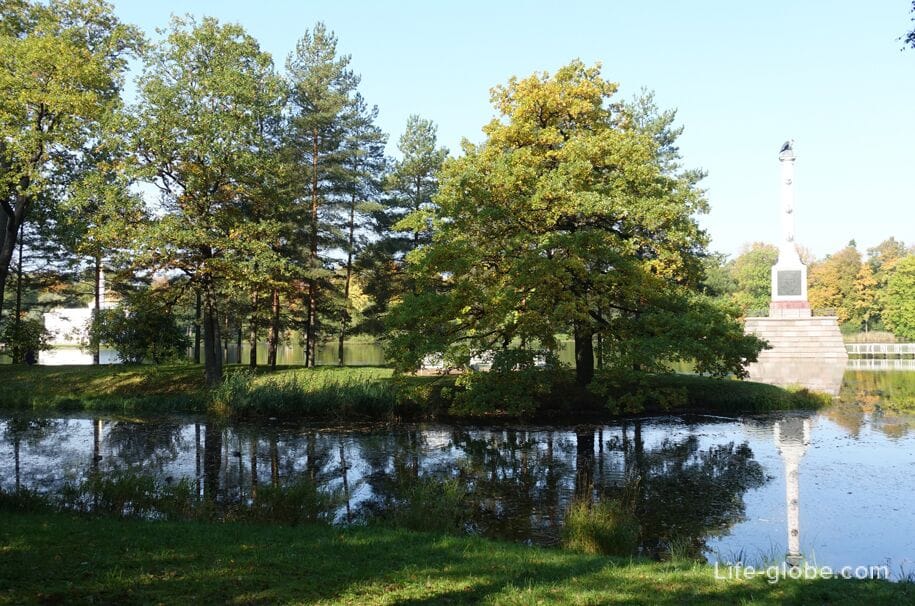

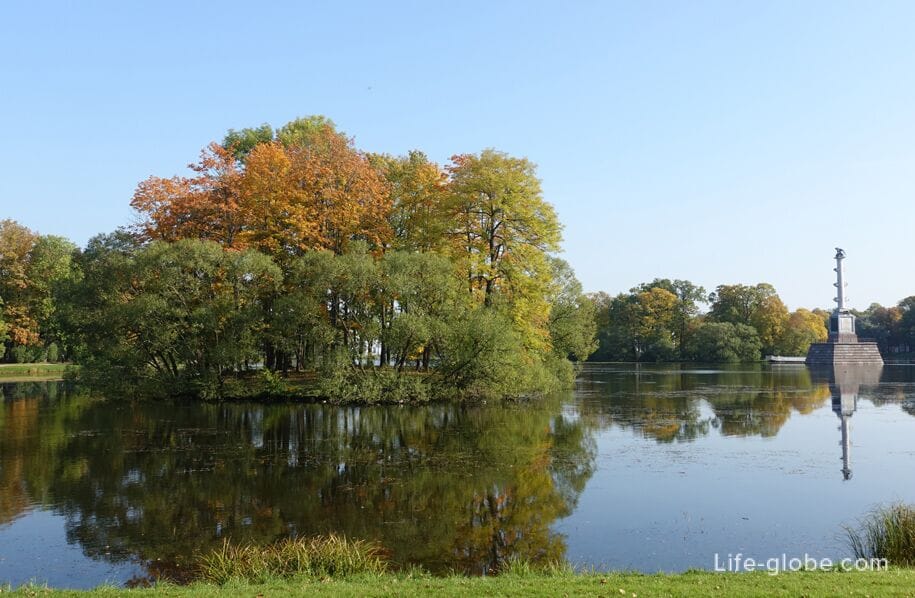
On the north side of the Big Pond, the regular part of the Catherine Park runs throughFish Channel (Large cross channel). The canal in 1721 was made man-made, and it was supposed to breed fish for the royal table (hence the name - "Fish"), but this idea was never implemented, due to the lack of running water in the canal at that time.

On the north-east side of the Big Pond are the three Lower (Big) Cascade Ponds, through which bridges are laid.



On the south-western side of the Large Pond is a monumental The marble Bridge that separates the Big Pond from the Swan Ponds, on which an archipelago of 7 islands was created, where small houses for swans were previously located.
The marble bridge is a magnificent monumental colonnade, set on a granite base, with wide staircases radiating on both sides. Learn more about the Marble Bridge…

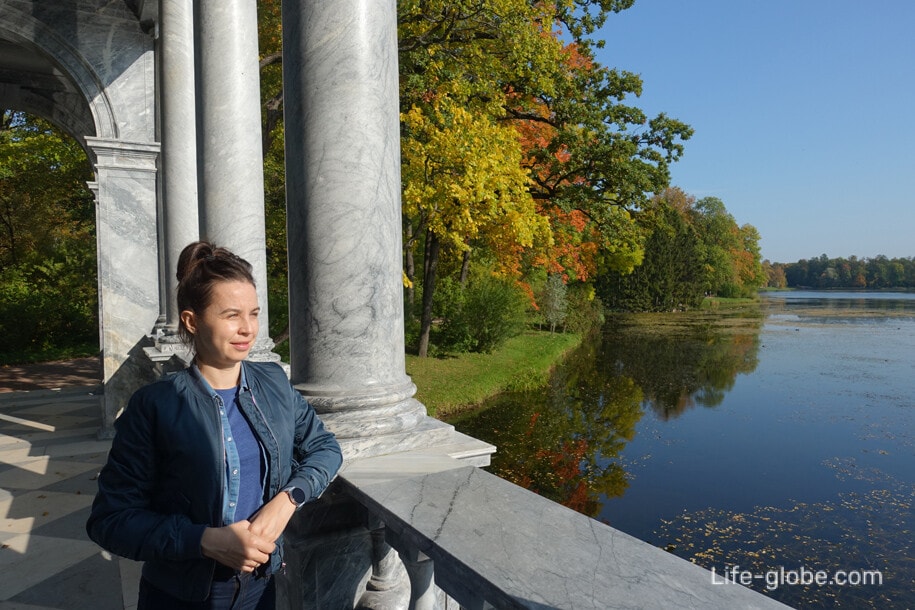
In the center of the large pond is the marble Chesma column (Oryol column), which was built in 1774-1778 by the Italian architect Antonio Rinaldi and is one of the monuments-memorials erected in honor of the three victories of the Russian fleet during the Russo-Turkish War of 1768-1774: the Chios, Chesma and Mytilene battles.
Bronze bas-reliefs depicting historical naval battles are placed on three sides of the gray marble pedestal of the Chesma column. On the south side, a marble plaque is attached to the pedestal with a description of the history of the immortalized battles.
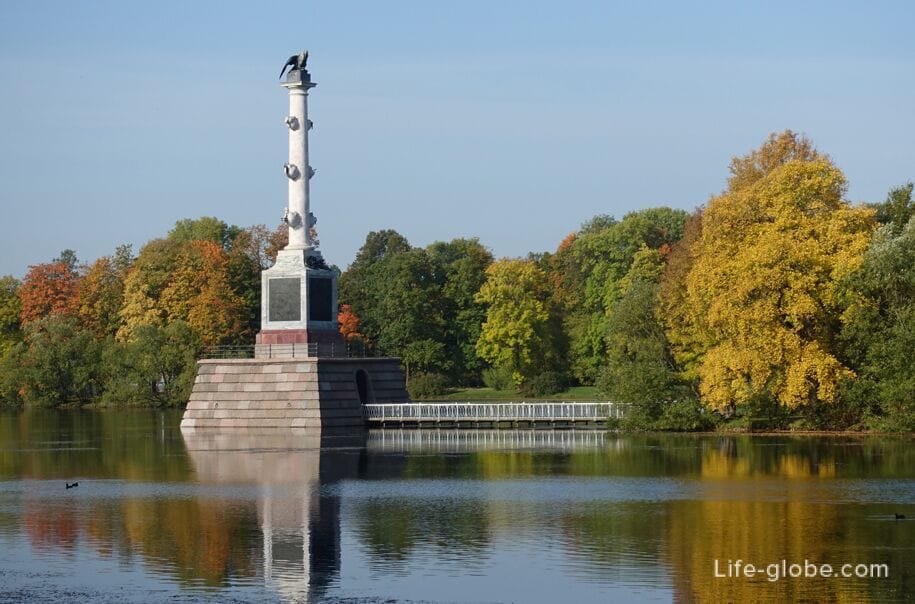
A bridge leads from the column to the island in the Big Pond. On the island itself is the pavilion "Hall on the Island", originally built in the late 1740s according to the project of S. I. Chevakinsky and decorated according to the sketches of F.-B. Rastrelli.
In 1794, the pavilion was rebuilt by D. Quarenghi, and in 1817-1820, new works were carried out in the Hall on the island by V. P. Stasov.
In the 18th and early 19th centuries, the pavilion was used for concerts and recreation, boating on the pond, and occasionally held court dinners in the pavilion.
Today, the Hall on the Island pavilion is used in the summer for concerts and special events. Read more about the Chesma Column and the Hall on the Island pavilion»…
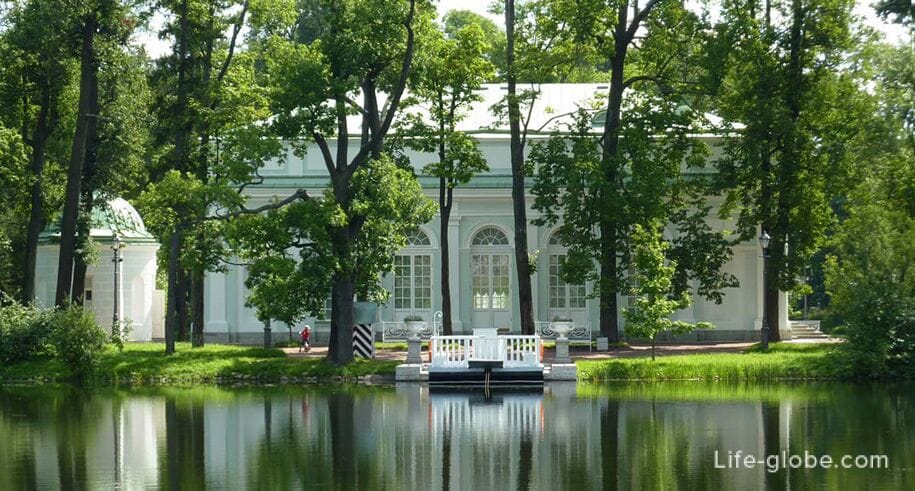
Piers near the Big Pond and how to get to the island of the Pond
You can only get to the island and the Chesma Column by ferry for a fee.
Ferries depart from the piers on the banks of the Big Pond, located near the Admiralty (east bank of the pond, ticket office in the Admiralty building) and near the fountain "Girl with a Jug" (west bank of the pond).
From the pier at the Admiralty, you can take a ride on the pond in a Venetian gondola.
View of the marina at the Admiralty
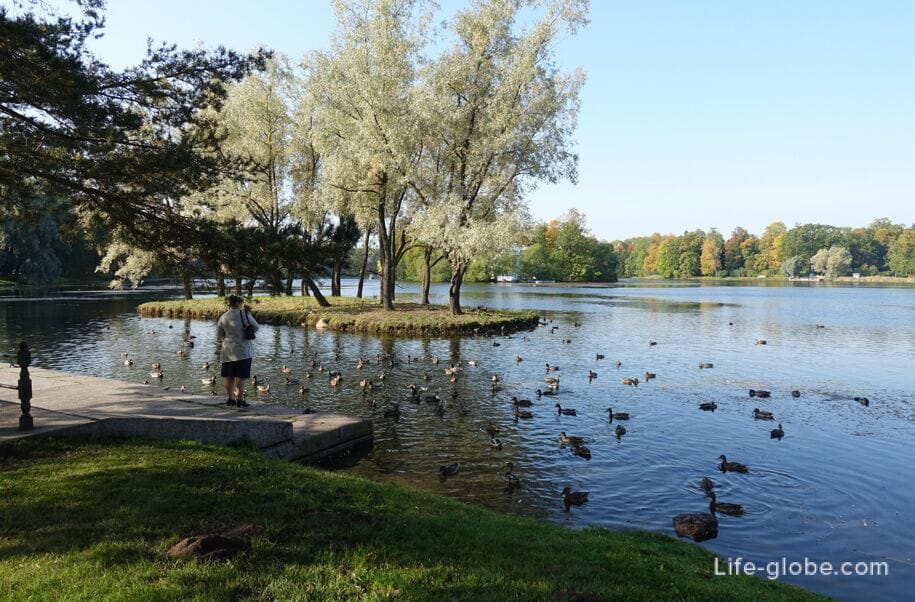
View of the marina near the fountain " The Girl with the Jug»
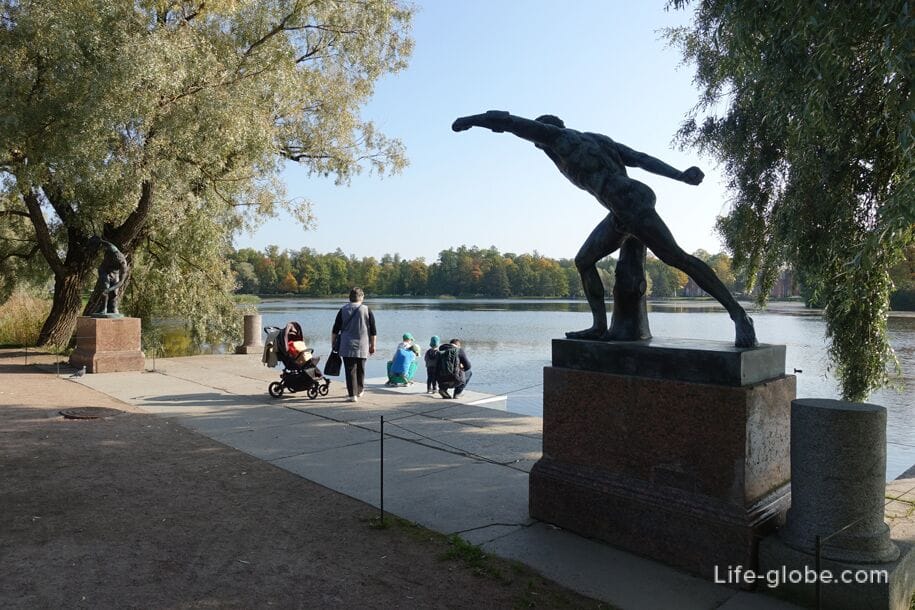
A whole ensemble of park buildings - small pavilions-is concentrated around the Big Pond.
The "Grotto" pavilion, which is one of the most original and attractive structures of the Catherine Park.
The grotto was built according to the project of the architect F. Rastrelli, in 1755-1756, under the Empress Elizabeth Petrovna (daughter of Peter I). The interior decoration of the pavilion was made under Catherine II in the 1770s by the architect A. Rinaldi.
In the 1780s, the pavilion became known as the "Morning Hall", because the Empress Catherine II liked to spend the morning hours in the Grotto, doing business and reading.
The pavilion is decorated with decorative grouped rusticated columns with capitals, openwork lattices and stucco decorations associated with marine themes. The building is crowned with a pyramidal fountain with" flowing " streams along the sides of the dome.
The pavilion is currently used for temporary exhibitions. Learn more about the Grotto Pavilion»…
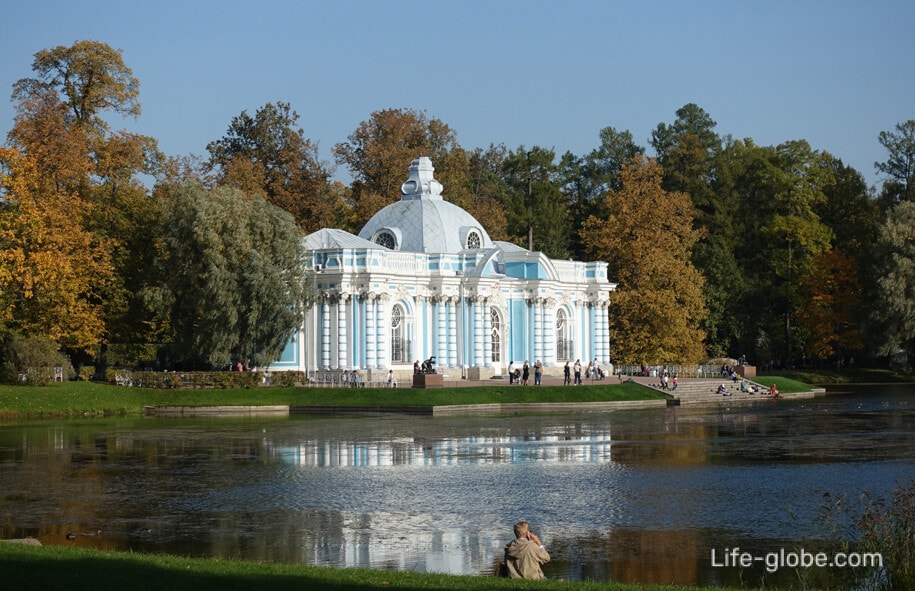
The Admiralty is an architectural ensemble consisting of three historic garden and park pavilions designed in the Dutch style.
The complex was built in 1772-1775 by the architect V. I. Neelov.
The lower floor of the central building housed the boats used for courtiers to ride on the Great Pond, and in the 19th century there was a collection of rowing boats. In the towers of the building there are stairs leading to a large bright hall on the second floor.
On both sides of the central pavilion are two more buildings, which in the past served as Poultry houses.
Today, the central building of the Admiralty is used for temporary exhibitions, and one of the former Poultry Houses has a restaurant. Learn more about the Admiralty…
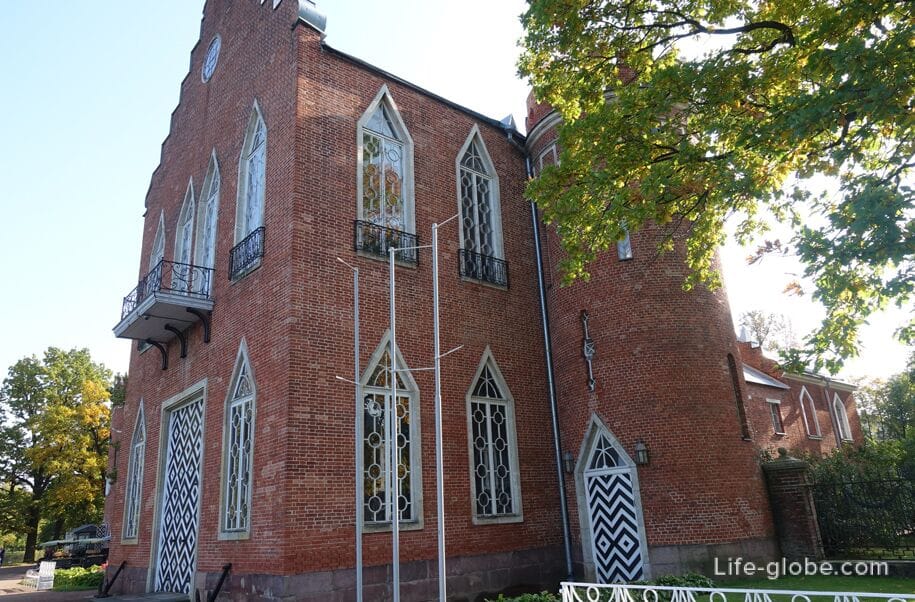
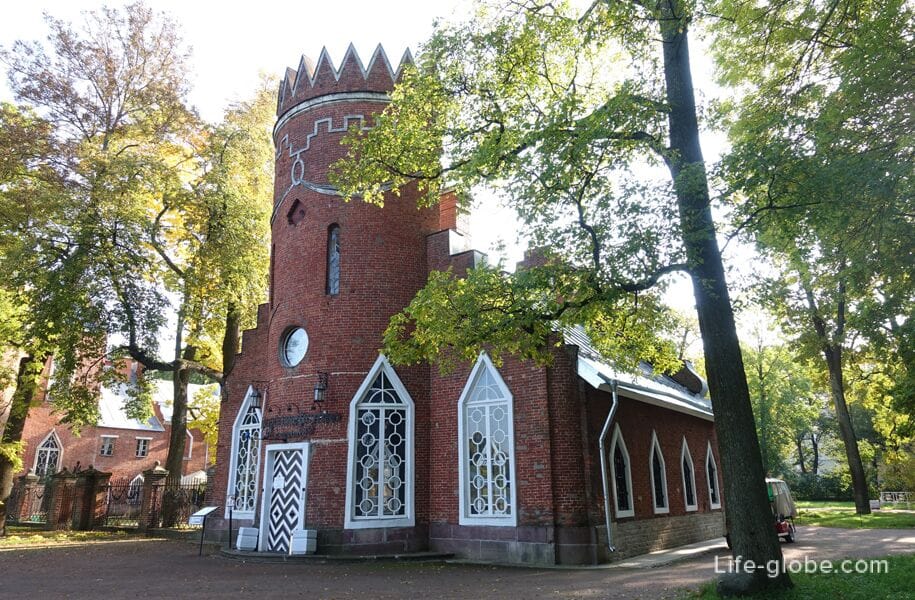
The Turkish Bath pavilion was built in 1850-1852 by the architect I. A. Monighetti, by order of Emperor Nicholas I.
The Turkish bath was a kind of memorial erected in honor of the victory in the Russian-Turkish War of 1828-1829. The Turkish mosque was used as a model for the construction of the memorial pavilion.
The interiors of the Turkish bath are made in the "Moorish" style.
The Turkish bath was previously intended for washing and relaxing.
Today, the Turkish Bath is a museum that can be visited for a fee. The ticket offices are located near the entrance to the pavilion. Learn more about the Turkish Bath Pavilion»…

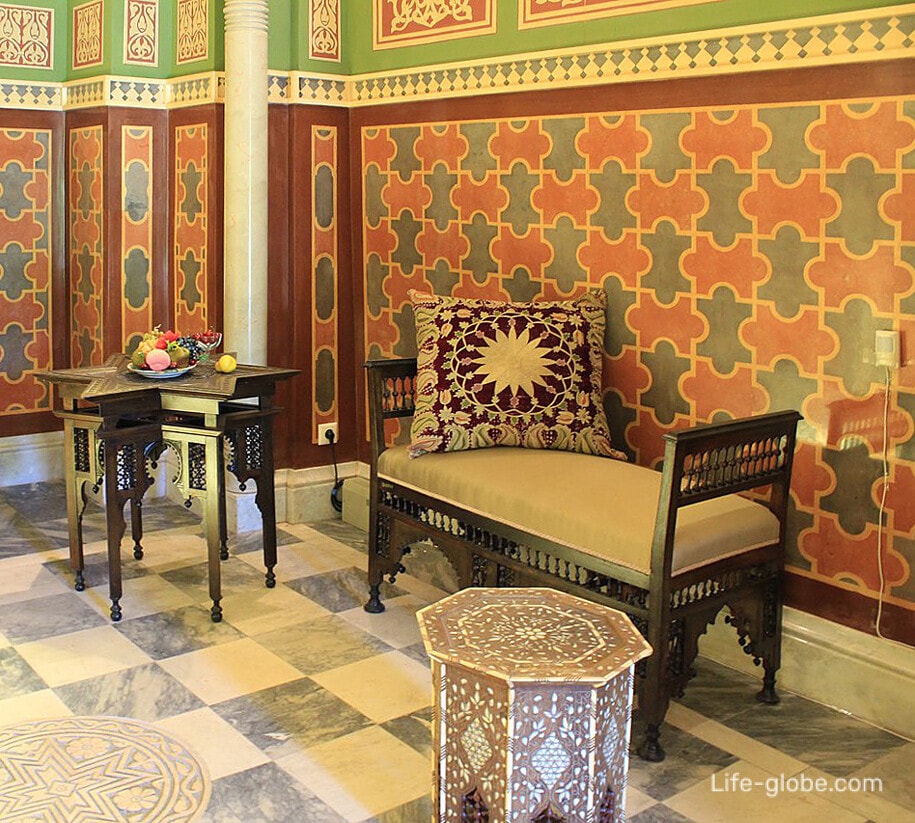
The west bank of the Big Pond is decorated with meadows, flower beds, a monument and a fountain:
- a fragment of the original bronze bas-relief of the Chesma column, which is located in a Large pond.
The column was damaged during the Great Patriotic War, and after its fragment was found at the bottom of the pond.
The bas-relief depicts the naval battles of the Russian-Turkish War of 1768-1774;
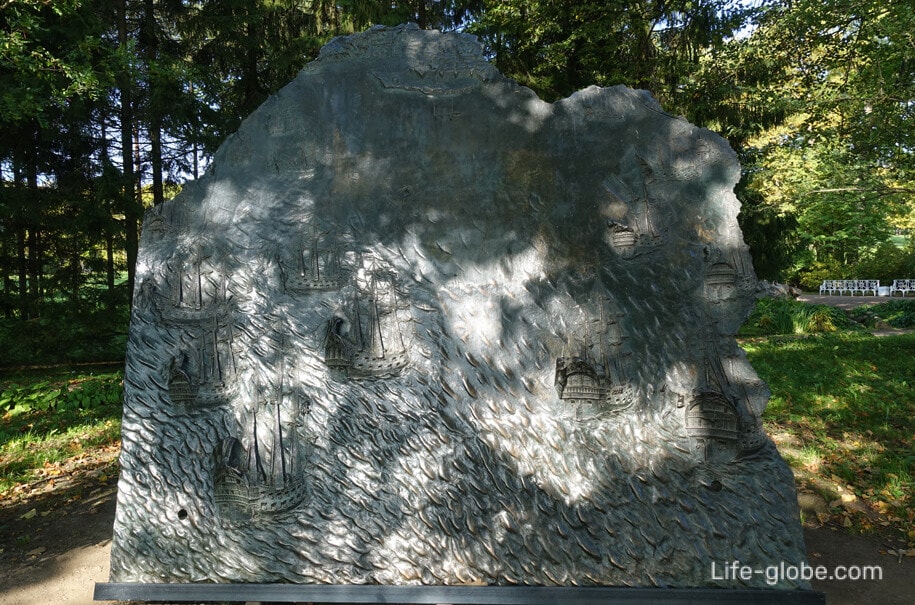
- the fountain "The girl with the Jug", arranged on the embankment, under which the waters of the local spring are hidden.
The fountain was designed by the engineer A. Betancourt and is a granite rock, which is a pedestal on which in 1816 was installed the sculpture "Girl with a jug", made by the sculptor P. P. Sokolov. Today, a copy of the sculpture, cast in 1990, is installed in the park, and the bronze original of the " Girl with a Jug "is placed in the funds of the museum-reserve"Tsarskoe Selo".
The sculpture represents a young girl sitting on a large boulder and fixing her eyes on a broken jug lying at her feet. From the pitcher runs a stream of spring water, descending the steps of the fountain, and then along the channel into a Large pond. Read more about the fountain "The Girl with the Jug"…
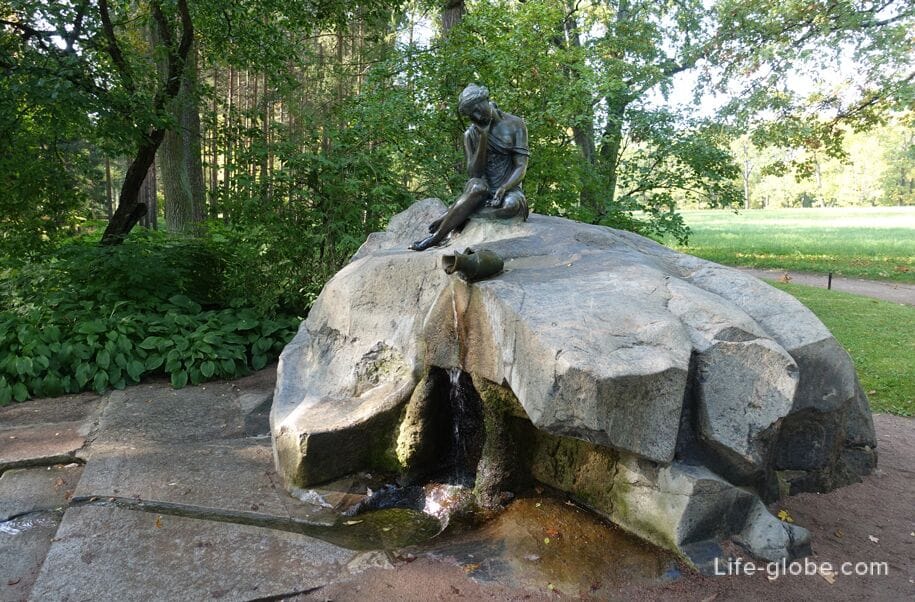
- decorative parterre with flower beds, sculptures (Venus and Cupid, Imperial Nerve) and alleys.
The ground floor was designed by architect T.B. Dubyago, developed in the 1950s.
Below the stalls, near the banks of a Large pond, there is a granite pier. And above - a monumental granite terrace with stairs and a balustrade decorated with electroplated copies of ancient sculptures - "Venus de Medicea", "Faun with a kid", "Apoksiomena", etc. Learn more about the Granite Terrace, parterre and marina…

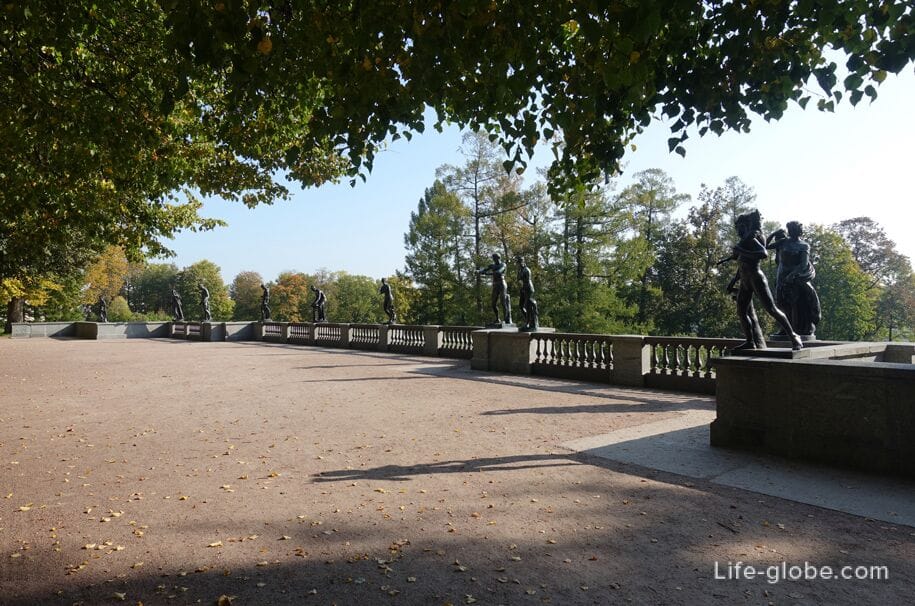
- the monument is a copy of the bust of Tsarevich Nikolai Alexandrovich, installed on a high pedestal.
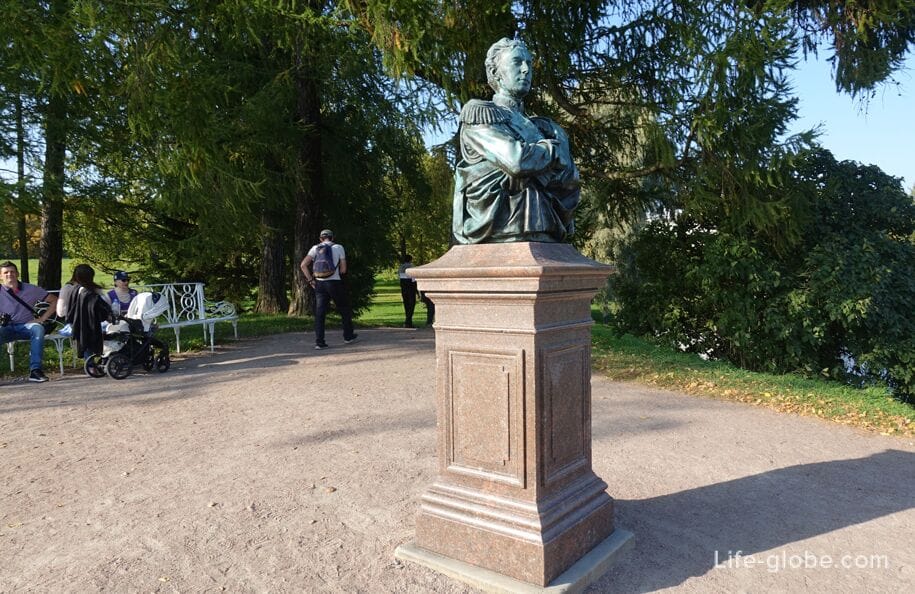
A large pond with a surrounding ensemble is located in Catherine Park, Pushkin, St. Petersburg.
Catherine Park with pavilions, together with Catherine's Palace, belong to the State Museum-Reserve "Tsarskoe Selo".
In the summer season (somewhere from the second half of April to mid-October), the entrance to the Catherine Park is paid.
In the Catherine Palace, you can visit the restored halls.
Tickets to the park, some of the pavilions of the park and the halls of the palace can be purchased at the box office, or in advance-online on the official website.
The opening hours of the park, the park pavilions and the palace, as well as the conditions for visiting and the cost of tickets, we recommend that you check on the website of the State Museum-Reserve "Tsarskoe Selo": tzar
You can visit Tsarskoye Selo with one of the excursions
In Pushkin, near the Catherine Park and the palace, you can stay
The 5-star Pevcheskaya Tower Hotel features restaurants, a bar, a rooftop observation deck, free Wi-Fi and parking.
Breakfast is included in the room rate. Link to the hotel
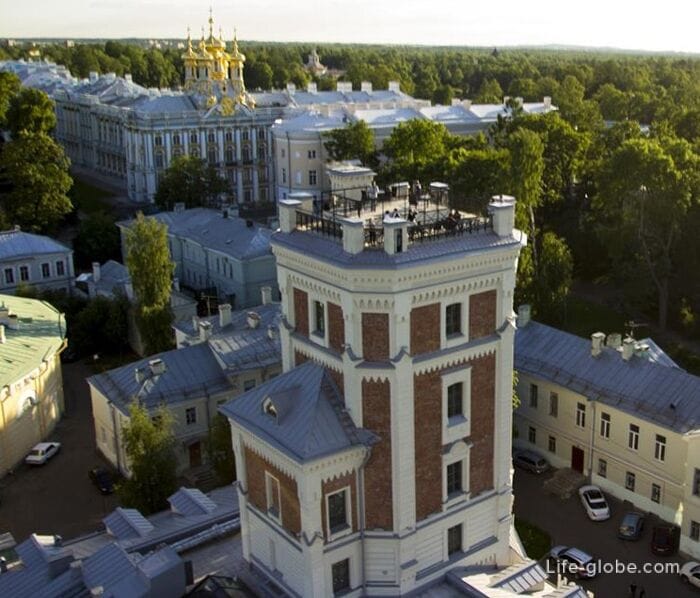
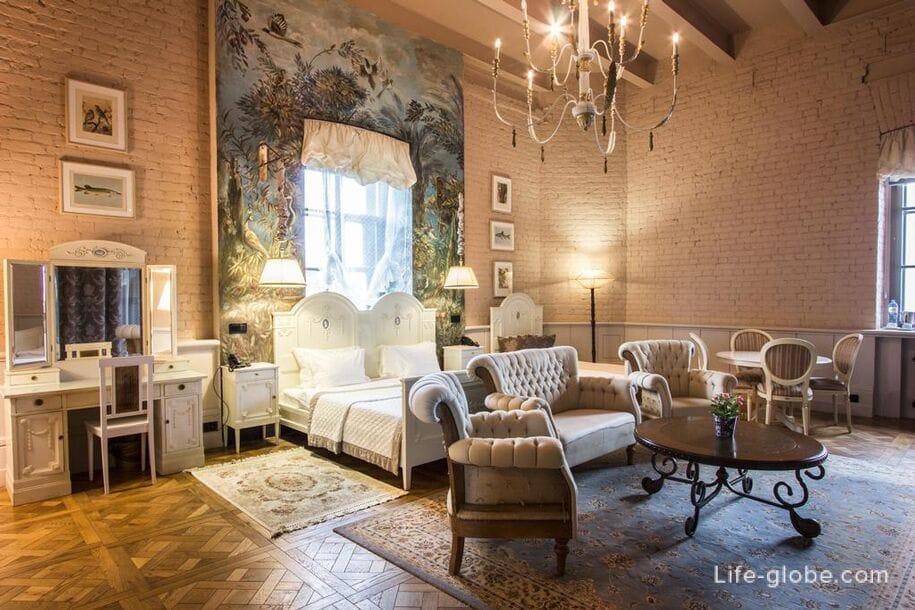
The 5-star luxury spa hotel "Tsar Palace Luxury Hotel & SPA"is located in a historic building.
The hotelfeatures a spa area with a swimming pool, a hammam, a salt sauna, a snow fountain, steam baths and a gym; free Wi-Fi, a 24-hour front desk, 2 restaurants, a lobby bar, private parking and meeting and conference rooms.
The rooms are equipped with climate control, a minibar, a safe and a private bathroom.
A buffet breakfast is included in the room rate. Link to the hotel

3-star hotel Ekaterina, located on the territory of the Catherine Palace and Park Ensemble.
At the hotel: 24-hour front desk, cafe, free Wi-Fi and parking.
Each room here will provide you with air conditioning, a TV, a work desk and free toiletries.
Breakfast is included in the room rate. Link to the hotel
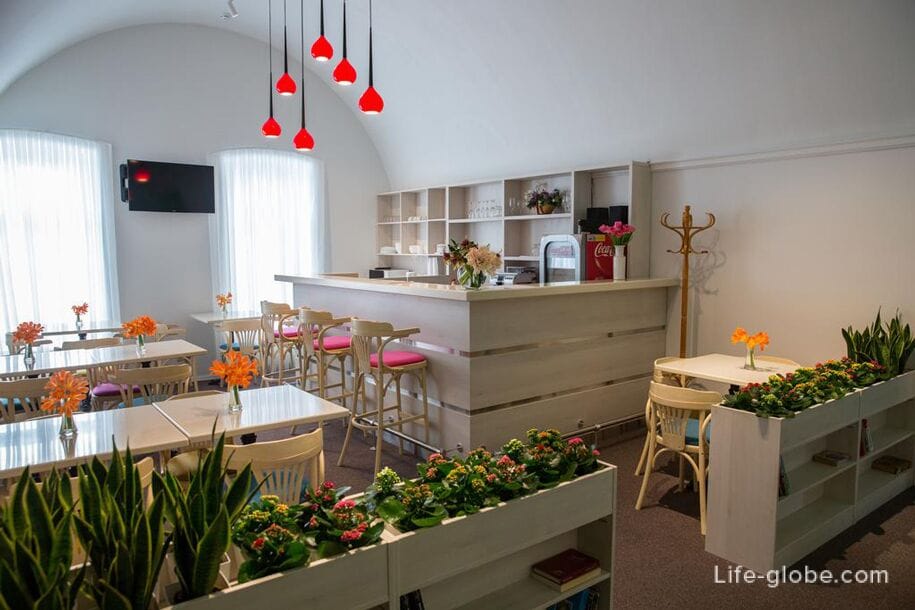
All accommodation facilities in St. Petersburg, including in the city center and in Pushkin, can be viewed and booked here